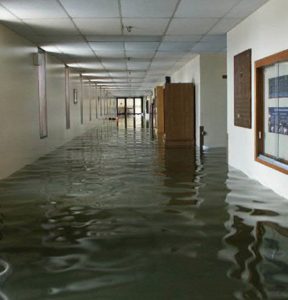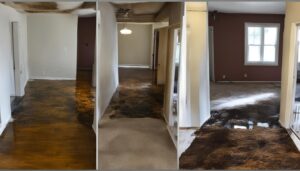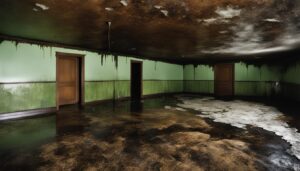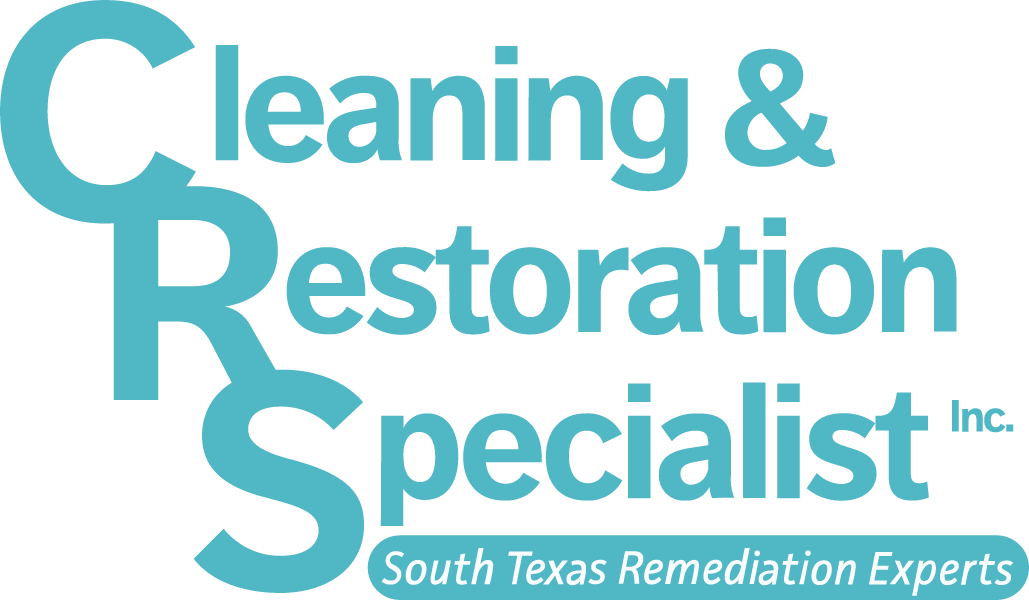Water damage is a common issue that can occur in any household or property. It can be caused by a variety of factors, including floods, leaks, and burst pipes. If left unchecked, water damage can result in significant structural damage, mold growth, and other long-term consequences. The question is, how do you know if water damage is permanent?
In this section, we will discuss how to identify the signs of water damage and understand its potential permanence. You will learn what steps you can take to mitigate the risks and prevent further damage to your property.
Don’t let water damage make your life difficult. Learn to detect the signs and minimize its impact.
Key Takeaways:
- Water damage can cause significant long-term consequences if not addressed properly.
- Identifying the signs of water damage is crucial in determining its potential permanence.
- Immediate action is necessary to prevent permanent damage, including seeking professional assistance when needed.
- Restoration and mitigation measures can help minimize the likelihood of permanent damage.
- Regular maintenance and check-ups can help prevent water damage from occurring.
Understanding Water Damage
Water damage can be a disruptive and costly issue for any homeowner or property owner. Before you can identify whether the damage is permanent, it’s crucial to have a basic understanding of what water damage is and the different types and causes.
Water damage can occur from various sources, such as:
| Source | Description |
|---|---|
| Natural disaster | Heavy rain, flooding, hurricanes, and storms |
| Plumbing issues | Burst pipes, faulty appliances, and sewage backups |
| Human error | Leaving taps running, overflowing bathtubs, and neglecting maintenance |
The extent and impact of water damage can also vary depending on the type of water involved, such as:
- Clean Water Damage: This occurs when water damage results from clean water sources such as broken pipes, rainwater, or melting snow. While it is the least hazardous type of water damage, it can still cause significant damage if not addressed promptly.
- Gray Water Damage: This is when the water involved contains some level of contamination or pollutants, such as from dishwashers or washing machines. It can cause health hazards if ingested or exposed to.
- Black Water Damage: This is the most severe type of water damage and occurs when the water involved is highly contaminated, such as from sewage backups or floodwater. It poses serious health hazards and will require immediate professional attention.
Understanding the different types and causes of water damage is crucial in determining the severity and appropriate action to take. In the next section, we will explore the signs of water damage, which can help you identify if you have an issue.
Signs of Water Damage
Water damage doesn’t always reveal itself in obvious ways. Being able to identify both visible and hidden signs can help you take appropriate action before the damage becomes severe, potentially leading to permanent damage.
Visible signs of water damage may include:
- Discoloration: Water stains or discoloration on walls, ceilings, or floors can be obvious signs of water damage.
- Peeling or bubbling paint: Water can cause paint to peel, bubble, or warp.
- Musty odor: A strong, musty smell can indicate the presence of water damage, even if the damage is not visible.
- Warped wood: Water can cause wood to warp and distort, indicating potential water damage.
Hidden signs of water damage may include:
- Dampness: Even if you don’t see water damage, if your home or a specific area feels damp, it may indicate water damage.
- Peeling wallpaper or sagging drywall: Water damage can cause wallpaper or drywall to come loose or sag, indicating hidden water damage.
- Soft spots: Soft spots in floors, walls, or ceilings can indicate water damage that’s happening inside walls or under flooring.
- Mold or mildew: Any signs of mold or mildew growth can indicate the presence of water damage, and immediate action should be taken.
By recognizing these signs of water damage, you can take appropriate steps to mitigate further damage. If you notice any of these signs, it is crucial to seek professional help as soon as possible to prevent potential permanent damage to your property.
Assessing the Severity of Water Damage
Water damage can vary in severity, from minor leaks to catastrophic floods. It’s important to assess the extent of the damage to determine its potential for permanent consequences. In severe cases, water damage can cause structural damage and lead to mold growth, which can have significant health implications.
To assess the severity of water damage, consider the following:
| Indicators of Severity | Description |
|---|---|
| Amount of water | The greater the volume of water, the more extensive and severe the damage is likely to be. |
| Duration of exposure | If the water or moisture is left unaddressed for an extended period, it may cause more harm. |
| Source of water | The water source determines the level of contamination and the potential risk of health hazards. |
| Affected areas | The location and material of affected areas impacts the severity of water damage. For example, water damage to drywall or wooden floors may be more severe than water damage to concrete floors. |
When assessing the severity of water damage, pay attention to these signs of potential structural damage:
- Cracks or warping of walls, ceilings, or floors
- Sagging or deformed ceilings or floors
- Loose or damaged tiles
- Buckling or peeling of wallpaper or paint
If you suspect mold growth, look for these telltale signs:
- Visible clusters of black, green, or white spots
- Musty odor
- Allergic reactions, such as sneezing or itchiness, when in the affected area
By assessing the severity of water damage, you can gauge the potential for permanent consequences and take appropriate action to safeguard your property and health. Don’t hesitate to seek professional help in severe cases or when in doubt.
Mitigating Water Damage
If you have experienced water damage, acting promptly is essential for mitigating long-term consequences. The following are some immediate steps you can take:
- Ensure your safety: If the water damage is extensive and poses a risk to your safety, evacuate the area immediately. If possible, turn off the electricity and gas to the affected area.
- Stop the source: If the water damage is caused by a burst pipe or a leaking appliance, turn off the water supply to stop the flow of water.
- Remove the water: Use a wet/dry vacuum or a mop to remove as much water as possible. Open windows and doors to facilitate ventilation and drying.
- Assess the damage: Check for the extent of damage to your property and contents. Salvage any items that are not severely damaged and move them to a dry area.
In cases of severe water damage, it’s best to seek professional help. A professional water damage restoration company can help assess the damage and minimize the long-term risks. They can also provide efficient restoration services after a water damage event, including:
- Water extraction: Professionals use specialized equipment to remove water quickly and efficiently.
- Drying techniques: Proper drying is crucial to prevent structural damage and mold growth. Professionals use high-grade equipment such as dehumidifiers and air movers to dry the affected area thoroughly.
- Repairs: Water damage can cause structural issues and damage to electrical systems. Professional restoration services can help repair and replace damaged structures and systems.
Remember, taking quick action and seeking professional help can minimize the potential for permanent water damage to your property.
Restorative Measures
Restoring water damage is a complex process that involves several steps to ensure a complete restoration. After addressing the initial water damage, the next crucial step is to start restoring the damaged areas. Here are some effective restorative measures for mitigating water damage:
- Effective Drying Techniques: Proper drying techniques are necessary to prevent further damage and stop any mould growth. The use of dehumidifiers, fans, and other drying equipment can help accelerate the drying process.
- Necessary Repairs: Repairing any damage to the property is essential to avoid any further deterioration. Cracks, holes, and other visible or structural damage must be repaired professionally.
- Professional Restoration Services: If the damage is extensive or requires specialized treatment, seeking professional restoration services is a wise decision. They have the expertise, tools, and techniques to restore your property completely.
Restorative measures are crucial in minimizing the likelihood of permanent water damage. By taking prompt action and seeking professional help when necessary, you can ensure a complete and successful restoration of your property.
Conclusion
In conclusion, water damage can be a serious problem if not addressed promptly. By understanding the signs and severity of water damage, you can take appropriate steps to mitigate potential permanent damage to your property. Remember to be vigilant in identifying both visible and hidden signs of water damage, and seek professional help when needed.
Acting quickly in case of water damage emergencies is crucial. Make sure to mitigate the damage as soon as possible and take the necessary restorative measures. Effective drying techniques and necessary repairs can help prevent permanent damage in the future. Remember, prevention is key.
Always keep in mind that water damage has the potential to cause not only structural damage to your property but also mold growth, which is a serious health hazard. By acting swiftly with the help of professionals if needed, you can safeguard your property and family.
We hope this article has been informative and helpful in understanding how to identify, assess, and mitigate water damage. Remember to always be proactive and seek expert guidance when necessary.
FAQ
Is water damage permanent?
Water damage can cause various degrees of permanence, depending on the severity and extent of the damage. It is important to take immediate action to prevent further damage and seek professional help to assess and mitigate the long-term consequences.
What are the signs of water damage?
Signs of water damage can vary, but common visible signs include water stains, discoloration, peeling paint, and warped or buckling surfaces. Hidden signs may include musty odors, mold growth, or a sudden increase in your water bill.
How can I assess the severity of water damage?
Assessing the severity of water damage involves evaluating the extent of structural damage, such as weakened walls or floors, and checking for signs of mold growth. It is important to consult with a professional to accurately determine the severity and potential for permanent damage.
What steps can I take to mitigate water damage?
In case of water damage, it is crucial to take immediate action. Start by shutting off the water source if possible and removing any standing water. Contact a professional restoration service for assistance, and they can guide you through the necessary mitigation steps.
What restorative measures should be taken after water damage?
Restorative measures involve thorough drying of affected areas using specialized equipment, removing damaged materials, and conducting necessary repairs. It is essential to consult with professionals who can utilize effective drying techniques and ensure proper restoration to minimize the potential for permanent damage.









